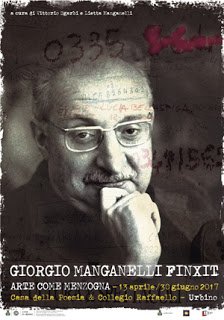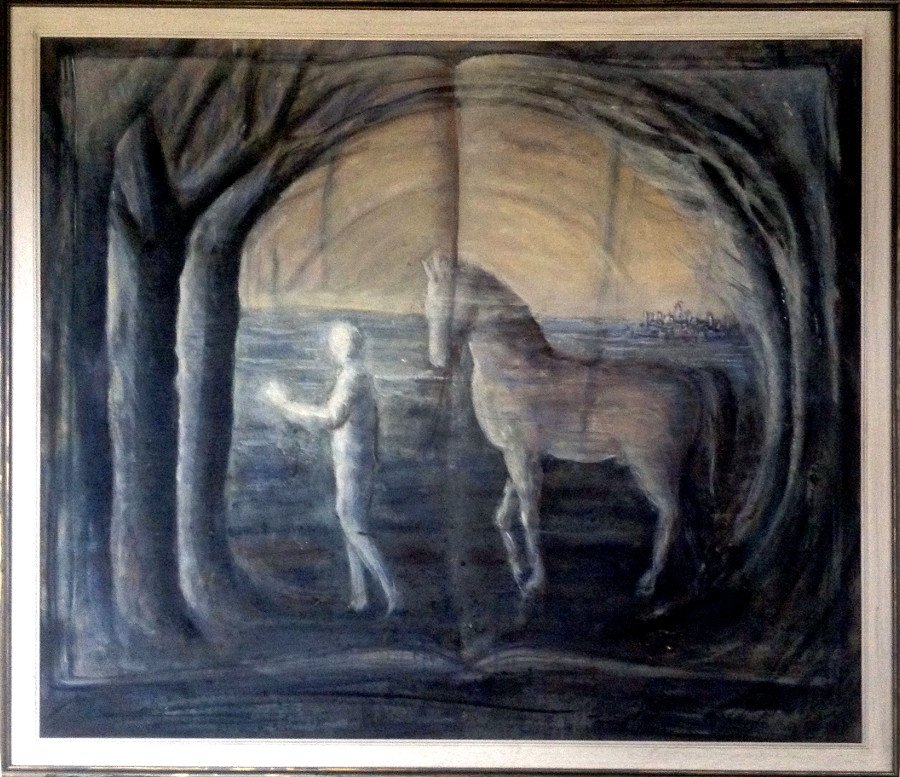This is the translation in English of my last post about italian writer Giorgio Manganelli.
One of the peculiarities of the italian writer Giorgio Manganelli is that he has written books that - perhaps - always speak of himself. I say "maybe" because it is a conjecture. In fact, only a few reportage and rare critic essays, in Manganelli's work, are first-person tales. But his voice is there even when the character seems to be someone else.
Of course, you can say that about many other writers; But Manganelli does this differently: it does so becoming a literary character. In fact, the Manganelli's books - in my personal impression as a simple reader - are toppings of the definition of a character and his affairs, and that character is himself
But that's not all (or we would still be in a crowded category). Giorgio Manganelli is a literary character of narratives in which he is not the protagonist, the voiceover or an aloof rapporteur, but the author.
It is as if Oblomov, Wakefield or Long John Silver (random examples, supposedly) had a literary production - and not autobiographical! - in which their voice of characters is recognizable and peculiar.
It should be inferred from that that Giorgio Manganelli has never existed, and that his books are therefore apocryphal art-made. But if Manganelli is a literary character, or a figurehead, who is the author who created him? Perhaps the beings (anonymous, generally) living in his texts wanted, united in congregation, to tell their own deeds by inventing a biographer for matters, in fact, of anonymity?
But the books that Manganelli signs are texts that, voluntarily or not, tell and define a single identity: this is the assumption from which I started. So not a covenant is but a single character hiding twice: the first, in the imaginary author; The second, in the multitude of characters.
Giorgio Manganelli, in short, wrote books whose protagonist is the absent reflection in a mirror of himself.
The wealth of the obsessions of that only absent person is so great that Manganelli's work continues to be read, studied, analyzed, and imagined 27 years after his death. The epigones of such a Thebes emerge, timid, at regular intervals, in italian Literature, and disappear almost immediately, like heads in the trenches.
It is images, I believe, to have some chance of success in investigating more deep on this author and in beeing his descendants. But I probably think it because I work with images more than words.

The relationship between Manganelli and the visual arts has recently been the subject of a beautiful exhibition organized in Urbino by his daughter and curator, Lietta Manganelli, for the will of Vittorio Sgarbi. The exhibition ended at the end of June, but it is hoped that it will be rescheduled to another location. The works presented were all inspired by Giorgio Manganelli's books. The authors: Nanni Balestrini, Paolo Beneforti, Paolo Della Bella, Giuliano Grittini, Giuliana Maldini, Franco Nonnis, Gastone Novelli, Giovanna Sandri, Marisa Bello and Giuliano Spagnul.
As you can see, I also had the honor of exhibiting some paintings. It's my paintings made in 1998 and inspired by "The Definitive Swamp". Exposing my work next to those of Gastone Novelli and Nanni Balestrini - among others - was a great emotion for me.

I hope to create more artworks from the books of Manganelli: this exhibition has enlivened my desire. In the vast Manganelli's bibliography the choice will be wide.
I wish Manganelli had written a book on a sea abyss.
